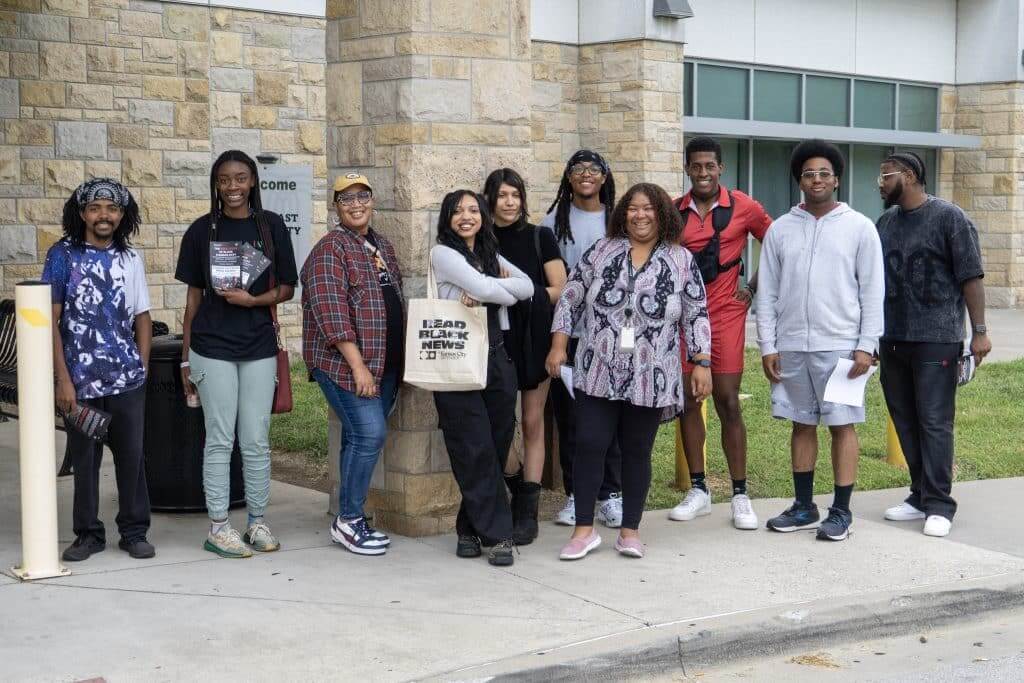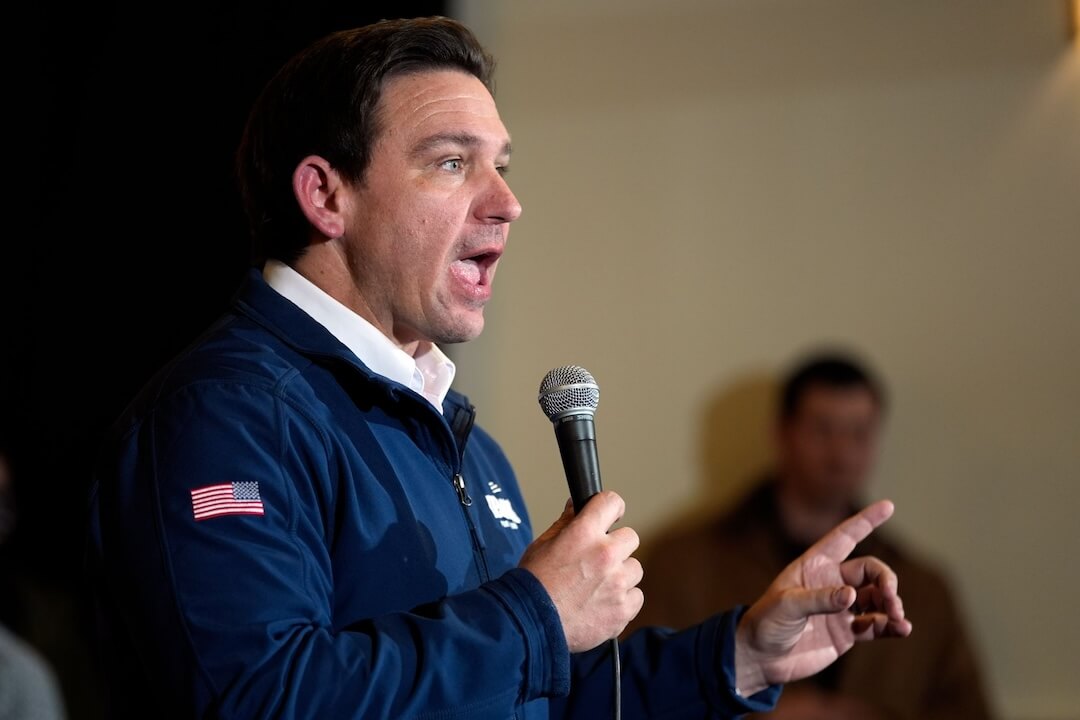As hedge funds tighten their ownership grip on newspaper chains, the alternative of local ownership, perhaps including a pivot to nonprofit status, is often talked up as a hot option.
Proceed with caution. Revisiting a dozen such sales over the last decade reinforced my sense that chains are reluctant to part with any paper they own. A formidable set of new challenges awaits any local buyer who does pry a property loose.
Two Baltimore foundations are openly pursuing buying The Baltimore Sun from Tribune Publishing. Several Chicago Tribune reporters and editors have been searching for community-minded angels to do the same.
McClatchy will almost certainly be passing, post-bankruptcy, into the hands of its chief creditor, Chatham Asset Management. Might a local group carve out the Miami Herald (or another McClatchy title like The Sacramento Bee or The Kansas City Star)?
With the right offer, you could probably get Gannett to sell one of its 250-plus daily outlets or even get arch-villain consolidator, Alden Global Capital, to part with one of its 60 or so dailies.
The difficulty in striking a deal is straightforward. One of the biggest attractions of chain ownership is the opportunity to centralize and reduce costs. If a chain sells one or several of its papers, it is left with more or less the same overhead but that much less revenue. It’s not a move that makes basic business sense.
So it would take what newspaper brokers John McGovern and Julie Bergman called in an interview “a very strong offer.” That’s if the chain owner will even entertain talking about a sale.
Once the deal closes, the local owner needs to disassemble what had been consolidated — creating operating departments, putting tech and editing systems in place and swallowing those expenses. Editorial enhancements will cost extra.
New owners, particularly those fresh to the business, may soon find revenue and profit pressures overwhelming. Paul Huntsman decided his family was facing unsustainable losses three years after buying The Salt Lake Tribune in 2016 from Alden’s MediaNews Group. The Salt Lake Tribune converted to nonprofit ownership in November 2019 with an expanded group of backers and a chance to get tax-deductible support from foundations and readers, following the public broadcast model.
Carve-outs are difficult, but not impossible
A “carve-out,” as it is known among acquisition pros, is not an easy exercise, but still can be done successfully with the right patient investors, the right market and the right business plan.
Take, for example, The (Santa Rosa, California) Press Democrat. Eight years in, publisher Steve Falk told me, the paper faces the same pandemic downturn as everyone else in the industry. Otherwise things are going well.
Falk, a former San Francisco Chronicle publisher, has been there from the start. The Press Democrat’s circulation area includes wine country, and there is serious money among residents and retirees. His investment group includes, among others, two venture capitalists, financier Sandy Weill and Jean Schulz, the “Peanuts” cartoonist Charles Schulz’s widow.
“Our revenues are going to be within a couple hundred thousand dollars of what they were in 2012,” Falk said. “I answer to people with modest profit expectations. It also helps that we are debt-free.”
The Press Democrat won the 2018 Pulitzer Prize for breaking news reporting “for lucid and tenacious coverage of historic wildfires that ravaged the city of Santa Rosa and Sonoma County.” Its newsroom is the same size as in 2013 — about 60 journalists.
The wildfires (as I have found covering decades of Florida hurricanes) perversely has had a positive economic effect in the area.
As the insurance checks roll in, Falk said, there has been a rebuilding boom — good times for contractors, furnishings suppliers and others who compete for the available work through advertising. With the COVID-19 impact, he expects total revenue to be down a manageable 13% this year.
Yes, his backers paid a premium to buy the Press Democrat from The New York Times Regional Media Group (which was sold soon after to Halifax, which in turn was sold to GateHouse, which bought Gannett and took its name in 2019).
And, yes, “it has been a challenge to outsource some services and rebuild a copy desk and a technology department.” But being truly local outweighs those disadvantages, Falk said. “As respected as The New York Times was, the community has rallied around local ownership. … We are keenly focused on local news … and we make our (business) decisions locally.”
Falk also recognizes that independent ownership of a mid-sized regional news publication has become an anomaly. “By my count, there are about 60 dailies in California, and I believe we are the only one that qualified for (the federal Paycheck Protection Program).” The rest were either too small or owned by a chain.
Winning back subscribers takes time
A similar group of locals bought The Berkshire Eagle and three other papers in western Massachusetts from Alden’s MediaNews Group in 2016. That experience has proven more mixed.
For one thing, two of the four investors, including a retired publisher of The Buffalo News, have died since the purchase.
The new owners have won plaudits for reinvigorating the newsroom, restoring arts coverage and organizing an all-star group of editorial advisors.
Business progress has been slower, president and publisher Fredric Rutberg told me.
“People have told us we had a ‘Field of Dreams’ business plan. … We built it, but they didn’t come.”
Rutberg, whose pre-retirement career was as a lawyer and a judge, said he has come to the conclusion that the process by which readers give up on a newspaper is like a bad relationship. “There are a bunch of small insults and then you never know what may push them over the edge.” For the Eagle that may have been a 60% price increase under previous ownership, he said.
“We assumed that they would be thrilled by the changes,” Rutberg said, but winning subscribers back has been a painstaking process. The Eagle essentially has needed to start over with the “funnel” approach of gradually building a customer relationship that ends in a subscription.
Add to that the slightly inflated purchase price and a nasty surprise when suppliers jacked up rates as contracts came due for renewal — the path to sustainability has been a hard climb.
“People come up to me on the street and thank me” for restoring local ownership, Rutberg said. That goodwill, however, doesn’t cover costs, particularly with the loss of advertising caused by the pandemic.
For all that, he said, he and his partner have given no thought to quitting. “I don’t regret it. It’s been a great adventure.”
Wealthy owners can weather difficulties — but can also bring their own challenges
One of the highest-profile acquisitions of the last decade was billionaire Sheldon Adelson’s family’s $140 million purchase of the Las Vegas Review-Journal from GateHouse in December 2015.
The beginning was embarrassingly messy. Adelson’s group first tried to keep its identity confidential, and top editors during the transition commissioned a hit job on a judge with whom the Adelsons had tangled. As reporters tried to unmask the mystery buyer, more conflict followed.
The Adelsons paid at least double what the paper would have been valued in a more traditional transaction. Their investment hasn’t stopped there.
Editor and publisher J. Keith Moyer told me that the newsroom count has grown from 94 to 148 (about the size of the Miami Herald’s) since the sale — a stunning increase when much of the industry has been losing roughly the same percentage of its journalists.
The new owners sprung for a series of upgrades to tech systems and digital design capacity. “We also spent $500,000 for a small (video) studio,” Moyer said. He was able to reopen a two-person Washington bureau that had been shuttered.
Digital audience is still in a building phase, he added, growing from 6,000 paid digital subscribers to 12,000 now. The goal for the end of 2020 was 20,000, but that may prove out of reach.
Also “as print circulation has been falling about 10-12% (annually)” in the industry, Moyer said, “we’ve been holding at about 4%.”
The newsroom has had no furlough or pay reductions during the pandemic advertising recession, Moyer added.
The newspaper faces nearly daily tests in writing about its owner since the Adelsons operate the huge Sands casino and resort business in Las Vegas, Macau and other venues abroad.
Sheldon Adelson spearheaded the city’s drive to land an NFL team and build a new stadium until he soured on the deal. He has long been a big dollar funder and kingmaker in Republican politics, and a resolute supporter of Israel.
The family has been sensitive to steering clear of meddling in news decisions, Moyer said. “I haven’t talked with Sheldon Adelson in more than a year,” Moyer said, and that was not about news coverage. Moyer’s family contact is Adelson’s son-in-law Patrick Dumont, chief financial officer of Las Vegas Sands Corp. Dumont has declined invitations to even visit the Review-Journal’s offices.
I got a version of the same thought several years ago when talking with a Review-Journal reporter who covers a sensitive government beat. The reporter told me that people act as if Sheldon Adelson was peering at his work from behind a pillar, when in fact the family is a total non-presence.
A possible lesson of the Las Vegas story is that there are wealthy local owners and then there are super-rich owners. Adelson isn’t Jeff Bezos, owner of The Washington Post and the richest man in the world. However, his net worth has been estimated at $32 billion, ranking him 17th on the 2019 Forbes 400 list of the richest Americans.
Local ownership comes with a range of results
Other examples of sales to locals reflect the same range of results.
A wealthy woman named Alice Rogoff bought the Anchorage Daily News from McClatchy for $34 million in 2014. She merged it with a digital news site she had become majority owner of in 2009, the Alaska Dispatch. Rogoff had a falling out with her editor and a series of business reversals including buying a new printing press and then having the deal for a building to house it fall through.
The Dispatch filed for bankruptcy and was sold to a family publishing company run by the Binkley family barely three years later. Not exactly local ownership — the Binkley’s base is six hours away in Fairbanks.
The Daily News has flourished, winning the 2020 Pulitzer Prize for Public Service this spring, a story that has been renewed this year in a second round of investigative reporting on lax law enforcement in rural Alaska with assistance from ProPublica’s local reporting network.
Medical entrepreneur Dr. Patrick Soon-Shiong bought the Los Angeles Times from Tribune Publishing for nearly $500 million in February 2018. Besides (by his own account) overpaying for his hometown paper, Soon-Shiong has invested heavily in editorial staffing and other improvements.
But he is believed to be growing weary of carrying losses in the tens of millions and has an eye on tightening expenses. Over the past month, the Times has experienced staff unrest about diversity and representation of minorities in leadership roles.
As I and others have reported in detail, the Advocate waged a seven-year news war with the established Times-Picayune in New Orleans and ended up buying its rival from the Advance Local chain.
The Advocate’s owner, John Georges, is a New Orleans businessman, but the Advocate also benefited from an established operation in Baton Rouge. It too is a recent Pulitzer winner for an investigation of injustices in jury sentencing.
The movements underway now
Reeling ahead to the present, two local foundations and others in Baltimore announced at the end of April that they would try to buy the Sun from Tribune Publishing. The chain is being gradually taken over by Alden, which owns 32% of its stock and has three seats on its seven-member board. There has not been much movement over the last two-and-a-half months.
“Contact has been minimal,” Ted Venetoulis, part of the group seeking to buy the Sun, told me. “Documents have not been exchanged.” That precludes any exploration of pricing.
Venetoulis tried with one of the foundations to buy the Sun from Tribune a decade ago and could never even get a meeting. He said he knows a premium over the typical valuation, based on a multiple of cash flow, would be required.
The News Guild supported the Baltimore bid, and local Guild chapters at other Tribune and McClatchy papers are vigorously advocating for a transfer to local ownership.
Are there really levers that would induce hedge fund owners to negotiate with potential local buyers? The industry is barely regulated. Owners like Alden avoid interaction with reporters or even with those who work at their properties. They have seemed immune from shaming.
“It does take a willing buyer and a willing seller,” Jon Schleuss, national president of the Guild, told me. “It’s going to be a challenge to get them to sell.”
But criticism of Tribune’s mismanagement of the Los Angeles Times, under previous ownership, Schleuss said, helped pave the way for the sale of 40% of the parent Tribune company to Soon-Shiong.
The Guild has conducted a relentless reporting and public relations offensive against Alden. Schleuss noted that CEO Heath Freeman has slightly raised his profile, responding to lawmakers and agreeing last month to an interview with The Washington Post.
The Guild has proposed its own version of a federal assistance bill that would require newsroom investment and disqualify chains. Mayors were enlisted to write letters advocating the sale of McClatchy properties to local groups. That seems an unlikely outcome now that hedge fund Chatham Asset Management has been named the winning bidder for the company as it emerges from bankruptcy.
Schleuss sees promise in a long game of cultivating public and political support for a return to local ownership. Among other appeals, politicians respond to the idea that the change “could create local jobs.”
The Salt Lake Tribune got a waiver to operate as a business accepting subscription and advertising revenue from the Internal Revenue Service as it transitioned last fall to nonprofit status. The ruling opens the door for others — established owners or new ones — to make the same pivot.
Still, in my view, no wave of local carve-outs appears in the offing. I look instead for foundations, alarmed by the erosion of local journalism, to invest directly in nonprofit digital startups or reporting projects of merit.
Rick Edmonds is Poynter’s media business analyst. He can be reached at redmonds@poynter.org.
Correction: Alice Rogoff did not start the Alaska Dispatch. She became the majority owner of the newspaper in 2009.








Doesn’t seem worth it. In the case of daily papers, all you’re really buying is the banner in some ancient font. It would be better to start one’s own free paper.